 W
WAcanthicus adonis, the adonis pleco or polka dot lyre-tail pleco, is a large species of armored catfish. It was originally described from the lower Tocantins River in Brazil, but individuals resembling the species have also been recorded from Amazonian Peru. The species is occasionally seen in the aquarium trade, but its massive adult size and territorially aggressive behavior means that a very large tank is required. These fish are opportunistic omnivores.
 W
WThe Australian blenny are small marine blennioid fish of the genus Ecsenius. They are small and reddish brown with a white ventral side. Australian blennies inhabit the shallow marine waters of the tropics. They are often found along the Great Barrier Reef and Coral Sea of Australia.
 W
WThe Azores dogfish is a very rare sleeper shark of the family Somniosidae. It is known only from the holotype caught north of the Azores and another caught in 2001.
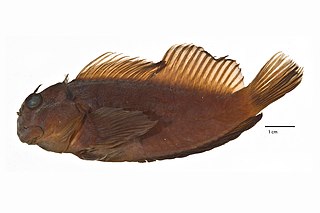 W
WCirripectes gilberti is a species of combtooth blenny found in coral reefs in the Indian ocean. This species reaches a length of 9.3 centimetres (3.7 in) SL. The specific name honours the American ichthyologist Carter R. Gilbert of the Florida State Museum of Natural History.
 W
WCirripectes randalli is a species of combtooth blenny found in the western Indian ocean. This species reaches a length of 10.7 centimetres (4.2 in) SL. The specific name honours the American ichthyologist John E. Randall of the Bishop Museum in Honolulu.
 W
WThe Comoro catshark is a rare catshark of the family Scyliorhinidae. The holotype and only specimen was taken from the Comoros Islands in the Indian Ocean, at a depth of 400 m. The Comoro catshark is not well-documented. The reproduction of this catshark is oviparous.
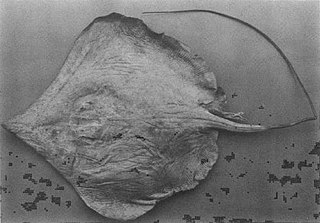 W
WThe sharpnose stingray is a little-known species of stingray in the family Dasyatidae, found off southern Japan and in the East China Sea. With a rounded pectoral fin disc and a long, projecting snout, D. acutirostra resembles the smaller pale-edged stingray. A number of characteristics differentiate this species from D. zugei, including larger eyes and the absence of a dorsal fin fold on the tail. The International Union for Conservation of Nature (IUCN) has assessed this species as Near Threatened, as its restricted distribution renders it vulnerable to increases in fishing pressure.
 W
WEcsenius alleni, known commonly as the Allen's blenny, is a species of combtooth blenny in the genus Ecsenius. It is found in coral reefs in the eastern Indian ocean, specifically in western Australia. It can reach a maximum length of 3.4 centimetres. The blennies feed primarily off of plants and algae. The specific name honours the ichthyologist Gerald R. Allen.
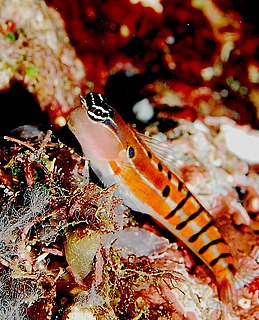 W
WEcsenius axelrodi, known commonly as the Axelrod's clown blenny or the Axelrod's combtooth blenny, is a species of ray-finned fish in the family Blenniidae, the combtooth blennies. It is found in shallow water on coral reefs in the western central Pacific Ocean. It was first described by Victor Gruschka Springer in 1988 and named in honour of the American ichthyologist Herbert Richard Axelrod.
 W
WEcsenius bathi, known commonly as the Bath's comb-tooth, is a species of combtooth blenny found in coral reefs in the western central Pacific ocean. The specific name honours the German ichthyologist Hans Bath (1924-2015) who was a notable worker on blennies and who brought this species to Springer's attention and allowed him to describe it.
 W
WEcsenius dentex is a species of combtooth blenny in the genus Ecsenius. It is found in the western Indian ocean, and is endemic to the gulfs of Aqaba, Suez, and the northwestern Red Sea. It can reach a maximum length of 4.8 centimetres. The blenny feeds primarily off of benthic algae and weeds.
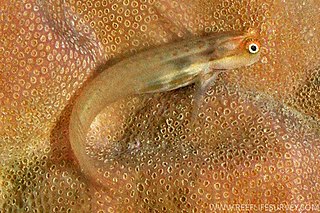 W
WEcsenius stictus, known commonly as the Great Barrier Reef blenny, is a species of combtooth blenny in the genus Ecsenius. It is found in the Great Barrier Reef, and around the Chesterfield Islands. It can reach a maximum length of 5.8 centimetres. Blennies in this species feed primarily off of plants, including benthic algae and weeds.
 W
WFusigobius signipinnis, commonly called flasher sandgoby or signal goby among various vernacular names, is a species of marine fish in the family Gobiidae.
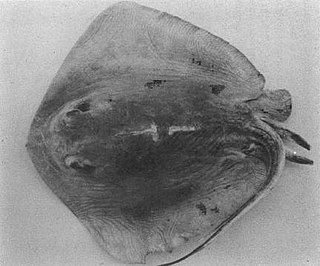 W
WThe Izu stingray is a little-known species of stingray in the family Dasyatidae, endemic to the Izu Peninsula of Japan. Found in shallow coastal waters, it is a fairly small species with a smooth, golden-brown, diamond-shaped pectoral fin disc and a whip-like tail with a low keel above and fin fold beneath. The fin fold is white, distinguishing the Izu stingray from all other Pacific members of its family. The International Union for Conservation of Nature (IUCN) has assessed this rare species as Near Threatened.
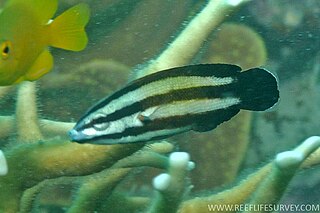 W
WLabropsis australis, the southern tubelip, is a species of marine ray-finned fish from the family Labridae, the wrasses. This species occurs in the south western Pacific Ocean from the Solomon Islands, Samoa, Vanuatu, Fiji, the Loyalty Islands, Tonga and the Great Barrier Reef. It is found in areas with heavy growth of corals including reefs, lagoons, passages and slopes. The adults feed on polyps in the coral while the juveniles feed on ectoparasites, and maybe mucus, on other reef fishes.
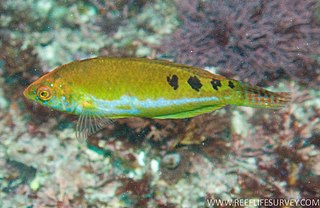 W
WThe little rainbow wrasse is a species of marine ray-finned fish which is classified within the wrasse family Labridae. It is found in the south eastern Indian Ocean off Western Australia from the Recherche Archipelago north to the Houtman Abrolhos islands. The specific name honours Dr. Gerald R. Allen who collected the holotype and a number of paratypes, and the brought Barry Russell's attention to this taxon so that he could describe it.
 W
WThe Malpelo barnacle blenny is a species of chaenopsid blenny found in coral reefs around Malpelo Island, in the eastern Pacific ocean. It can reach a maximum total length of 5 cm (2.0 in). This species feeds primarily on zooplankton. The specific name honours the environmental biologist John S. Stephens, Jr.
 W
WThe marbled swordtail is a species of freshwater fish in the family Poeciliidae. It was endemic to the Rio Salado system in northeastern Mexico.
 W
WThe blackbar drum is a species of fish in the family Sciaenidae. It is located on the shores of the Caribbean Sea.
 W
WSebastes cheni, the Japanese white seaperch or Japanese blueback seaperch, is a species of fish in the rockfish family found in the Northwest Pacific.
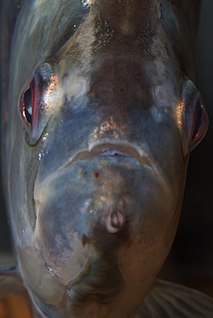 W
WSerrasalmus geryi is a species of fish found in the lower Tocantins and Araguaia Rivers of Brazil. This rare Serrasalmus is the one piranha of the genus Serrasalmus that can coexist with others of the same species. Gery's Piranha reaches sizes up to 12 inches in length.
 W
WThe shortnose demon catshark is a catshark of the family Scyliorhinidae found only in deep water in the East China Sea. Its length is up to 40 cm. A. internatus is known only from the holotype and a paratype, both caught in the East China Sea, probably taken as bycatch in deepwater trawl fisheries. Insufficient information is available to assess this species' conservation status. The reproduction of this catshark is oviparous.
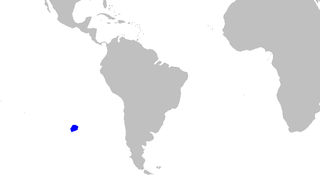 W
WThe sparsetooth dogfish is a very rare sleeper shark of the family Somniosidae, the holotype of which was taken in the subtropical southeast Pacific at a depth of up to 200 m. Its biology is unknown.
 W
WThe splendid lanternshark is a shark of the family Etmopteridae found in the western Pacific at depths between 120 and 210 m. Its length is up to 30 cm.
 W
WSqualius carolitertii is a species of fresh-water fish in the family Cyprinidae. It is found in Portugal and Spain, and known there as the bordallo, escalo or gallego.
 W
WTeleocichla cinderella is a species of cichlid endemic to Brazil where it is found in the lower Tocantins River basin. This species can reach a length of 14 cm (5.5 in). This species is a rheophile and has an elongated body shape and underdeveloped swimbladder. The species superficially resembles some species of goby or gudgeon.
 W
WThe waterfall climbing cave fish, also known as the cave angel fish, is a species of troglobitic hillstream loach endemic to Thailand. It reaches a length of 2.8 centimetres (1.1 in) SL. This fish is known for its fins, which can grapple onto terrain, and its ability to climb. This fish is the only known member of its genus. The species has been recorded from eight subterranean sites within a large karst system in Mae Hong Son Province, Thailand. The species has an extent of occurrence of nearly 200 km2, but an area of occupancy of 6 km2; the connectivity of this karst systems is unknown, some caves are definitely connected. The species is found in eight of the caves. It has been recorded from the Susa and Tham Mae Lana. It may also occur in other submerged caves in the area. However, the species has a potential threat of agricultural pollution which could impact the whole karst system, making it one location.